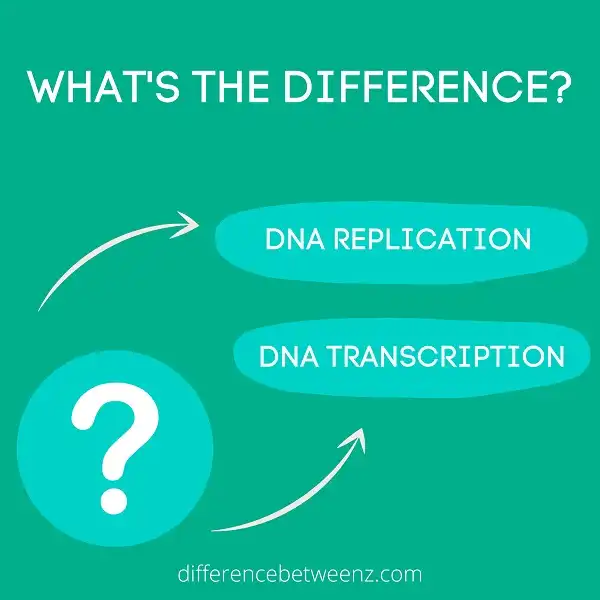DNA replication and transcription are both essential processes in the life of a cell, but they are quite different. DNA replication copies the genetic code from one strand of DNA to another, while transcription uses that code to create a molecule of RNA. This difference is reflected in the proteins these processes produce replicates and transcriptases. Here we’ll take a closer look at these two vital cellular activities.
What is DNA Replication?
DNA replication is the process of copying a DNA molecule. It occurs in all living cells and is essential for the propagation of life. DNA replication copies the unique sequence of nucleotides that make up DNA. This ensures that each new cell has an exact copy of the DNA molecules present in the original cell. DNA replication begins with the unzipping of the double helix structure of DNA. This exposes the bases, which are then used as templates to create new DNA strands. The bases pair up with their complementary nucleotides, and DNA polymerase enzymes help to link the new nucleotides together. Once replication is complete, the double helix structure reforms and two identical DNA molecules are produced. DNA replication is a remarkably accurate process, with errors occurring less than one time in every trillion base pairs copied.
What is DNA Transcription?
DNA transcription is the process by which DNA is copied into RNA. This process is essential for the expression of genes, as DNA cannot be directly translated into proteins. First, the DNA double helix unwinds and separates into two single strands. Then, an RNA polymerase binds to the DNA template and begins to assemble a complementary RNA strand. Once the RNA strand is complete, it breaks away from the DNA template and the two strands rewind into a double helix. DNA transcription is a highly precise process, as even a small mistake in the RNA sequence can result in a malfunctioning protein.
Differences between DNA Replication and Transcription
DNA replication is the process by which DNA is copied from one generation to the next. Transcription is the process by which DNA is translated into RNA, which is then used to direct the synthesis of proteins. Both DNA replication and transcription are_ essential for the continuity of life. DNA replication occurs in all cells, while transcription occurs only in_ certain cells. DNA replication begins with the unzipping of the double helix, and then each strand serves as a template for the_ synthesis of a new strand. Transcription also begins with the unzipping of the double helix, but instead of synthesizing a new DNA strand, RNA is synthesized. The RNA then leaves the nucleus and enters the cytoplasm, where it directs the synthesis of proteins. DNA replication is thus essential for cell division, while transcription is essential for protein synthesis. Both processes are essential for life as we know it.
Conclusion
In conclusion, DNA replication and transcription are both important processes in the life of a cell. However, they differ in their primary function, as well as the enzymes that carry out each process. By understanding these differences, we can better understand how cells work and the role DNA plays in gene expression.


